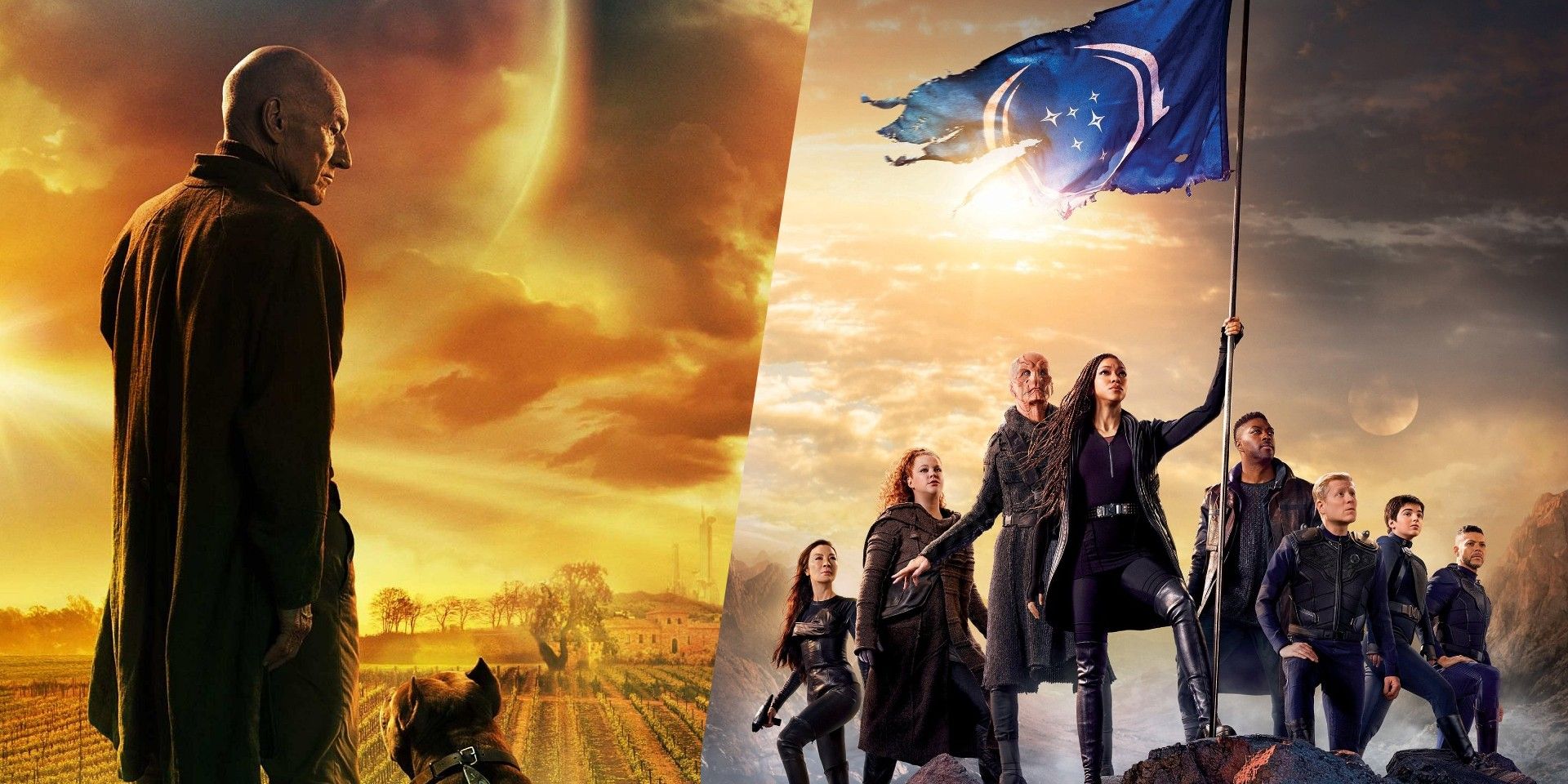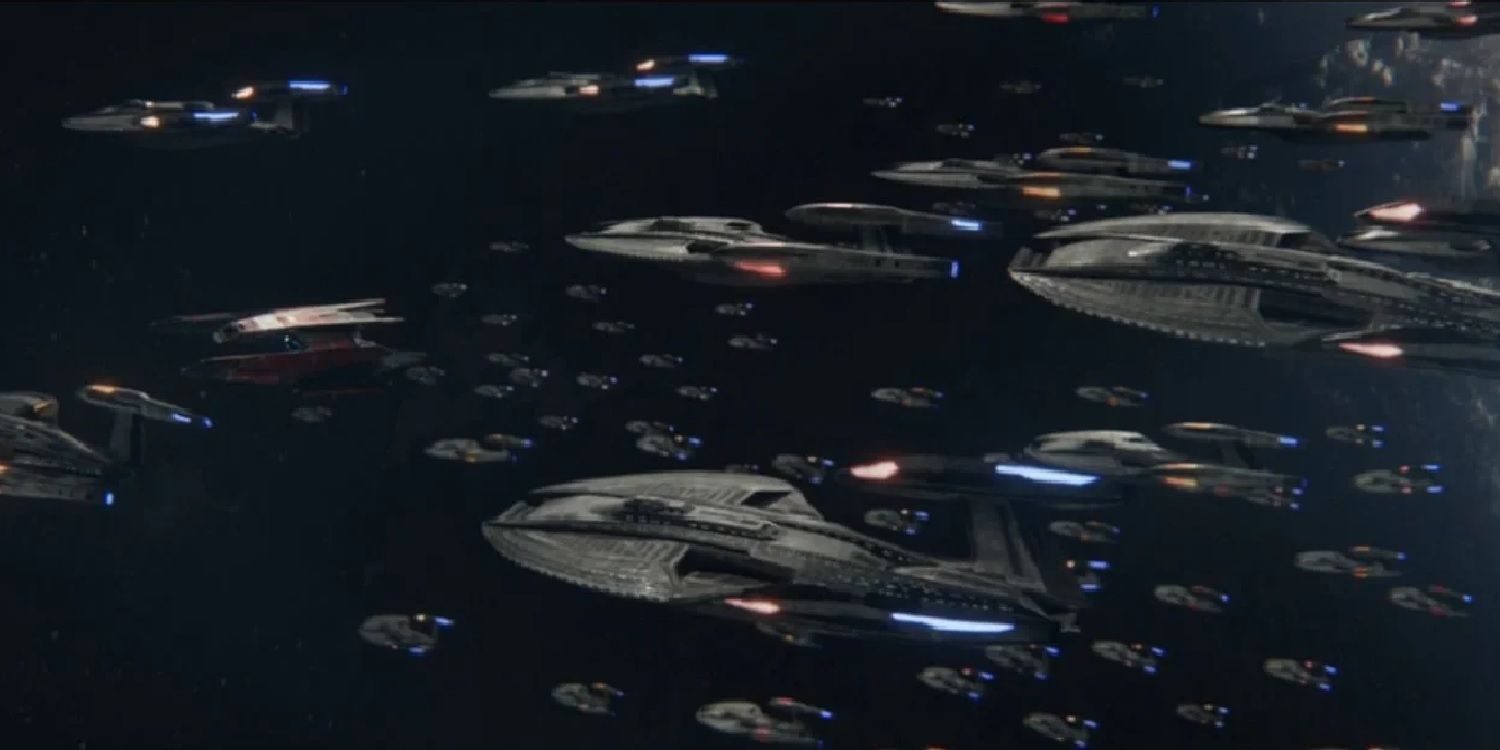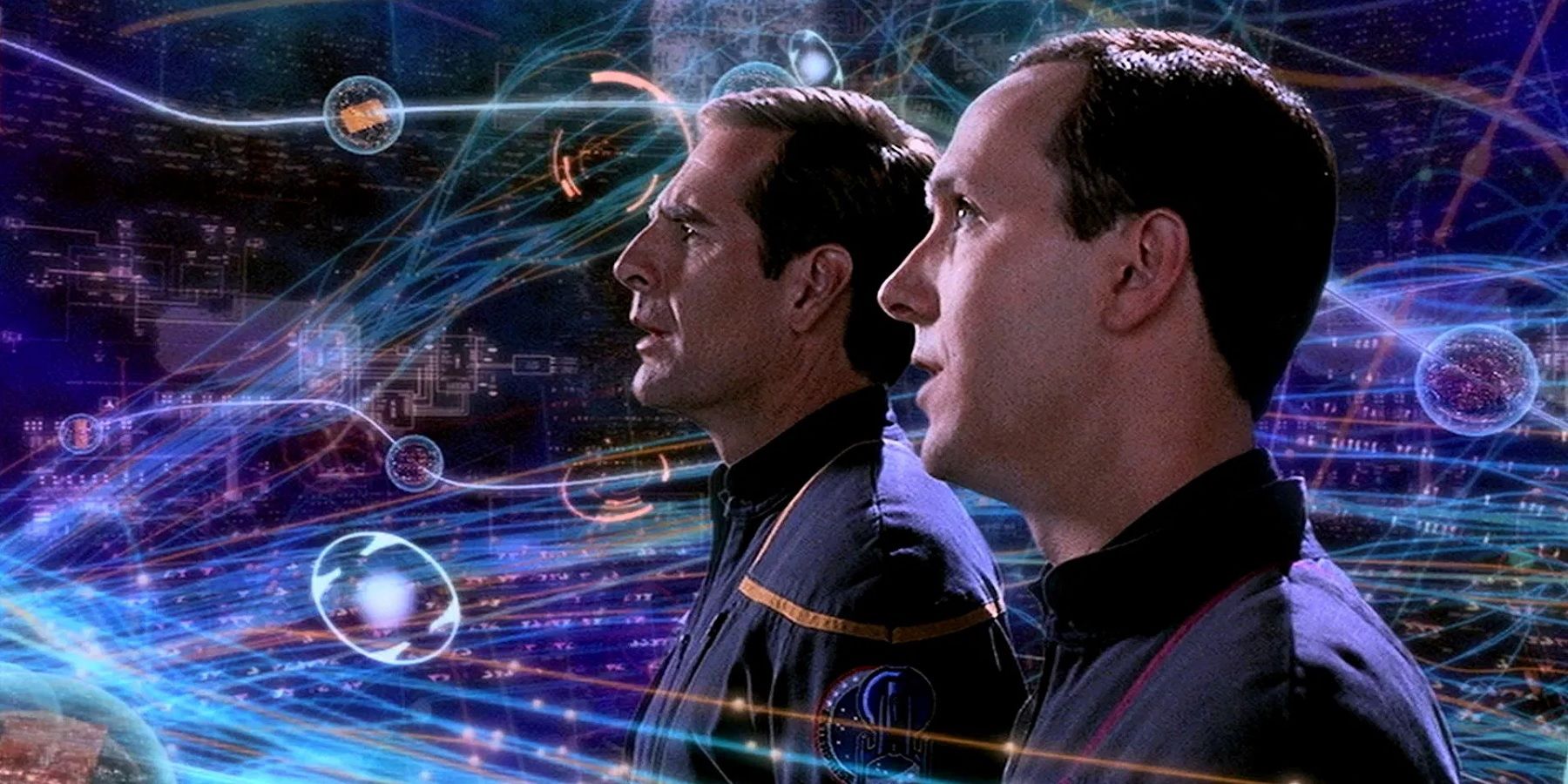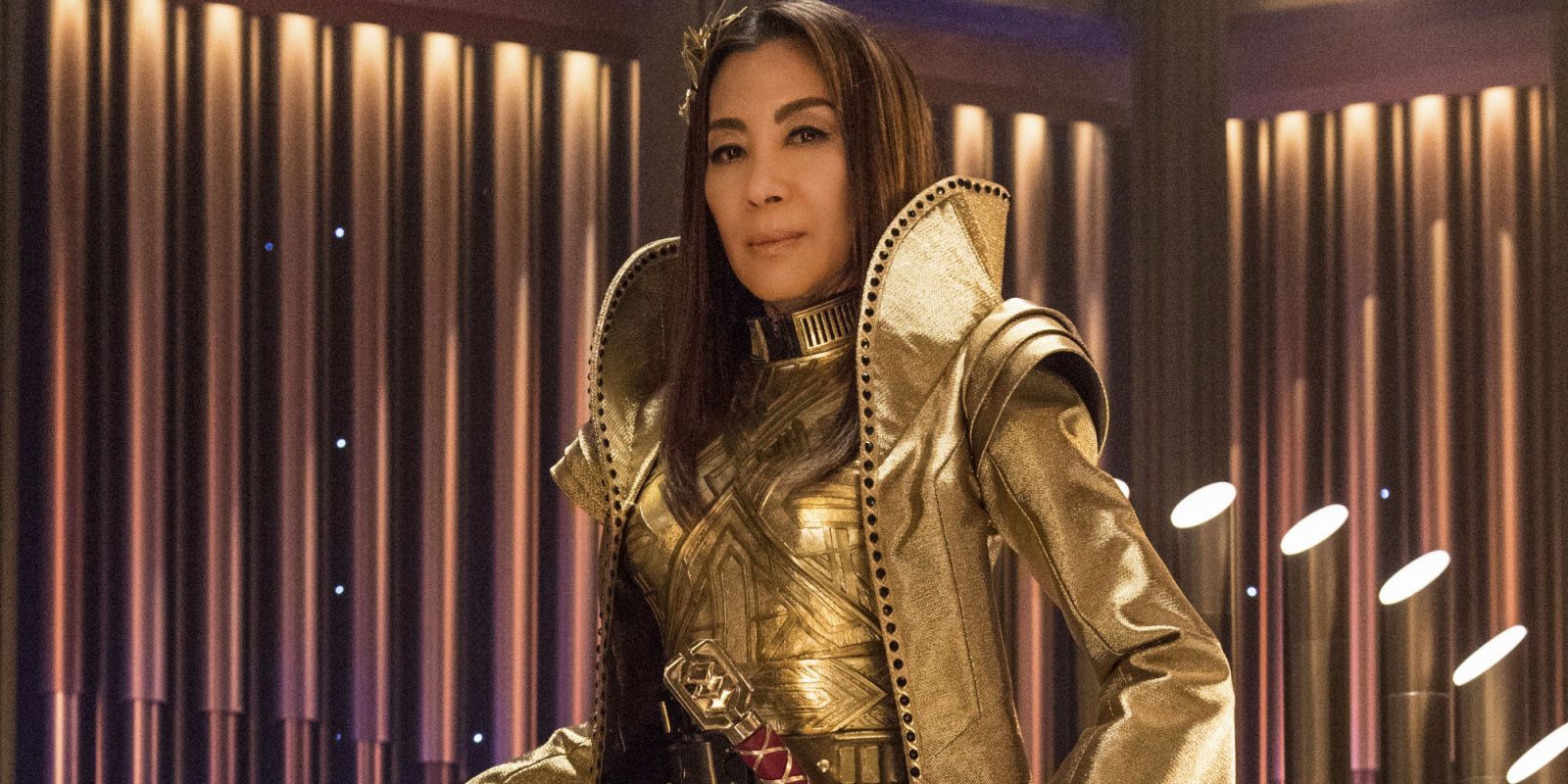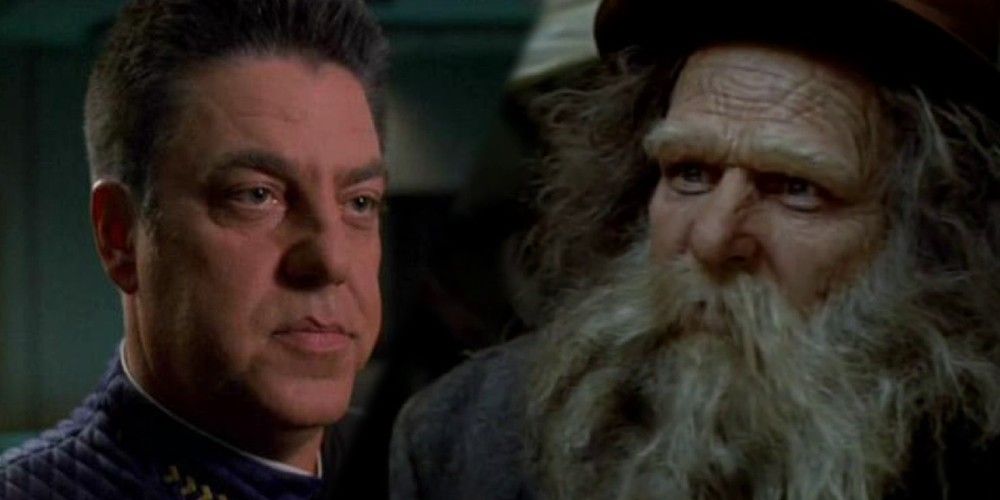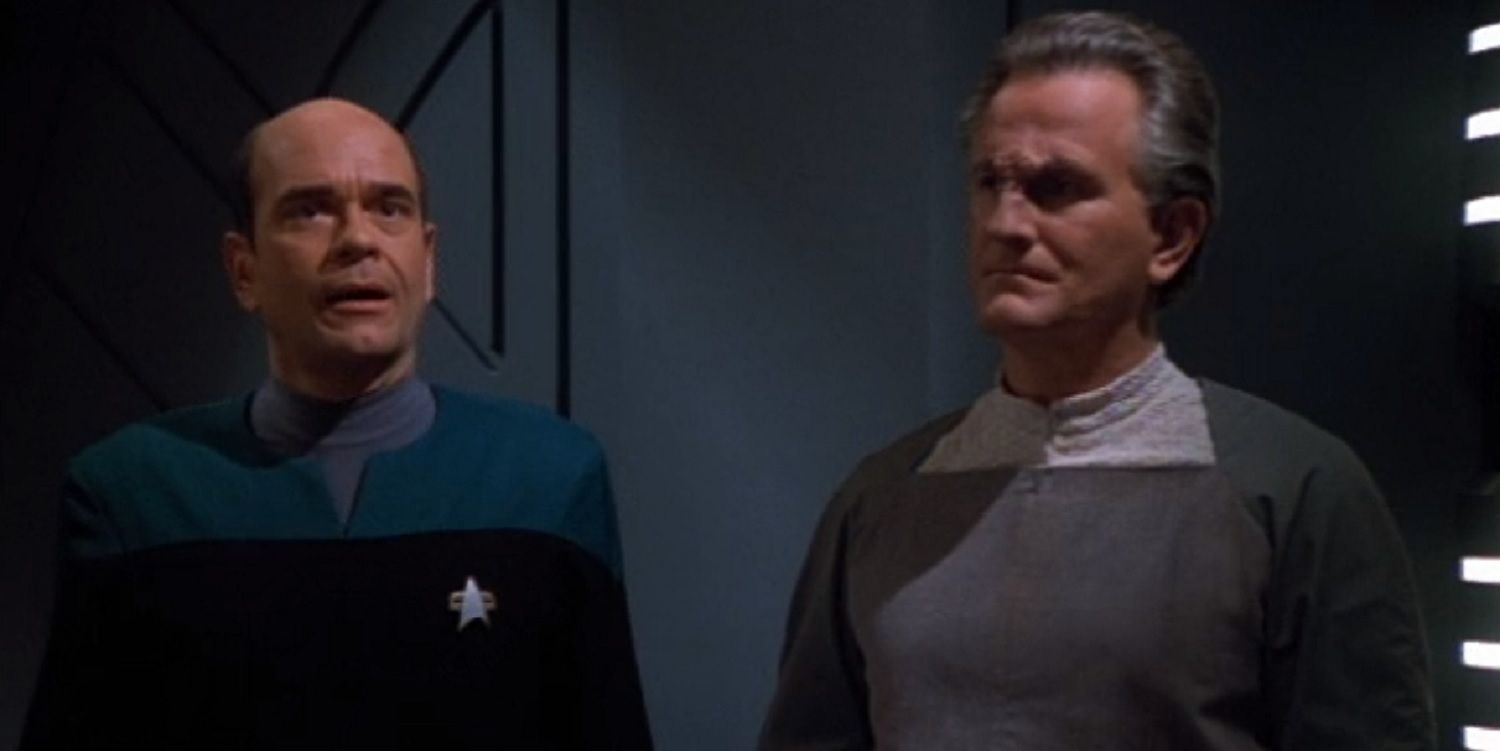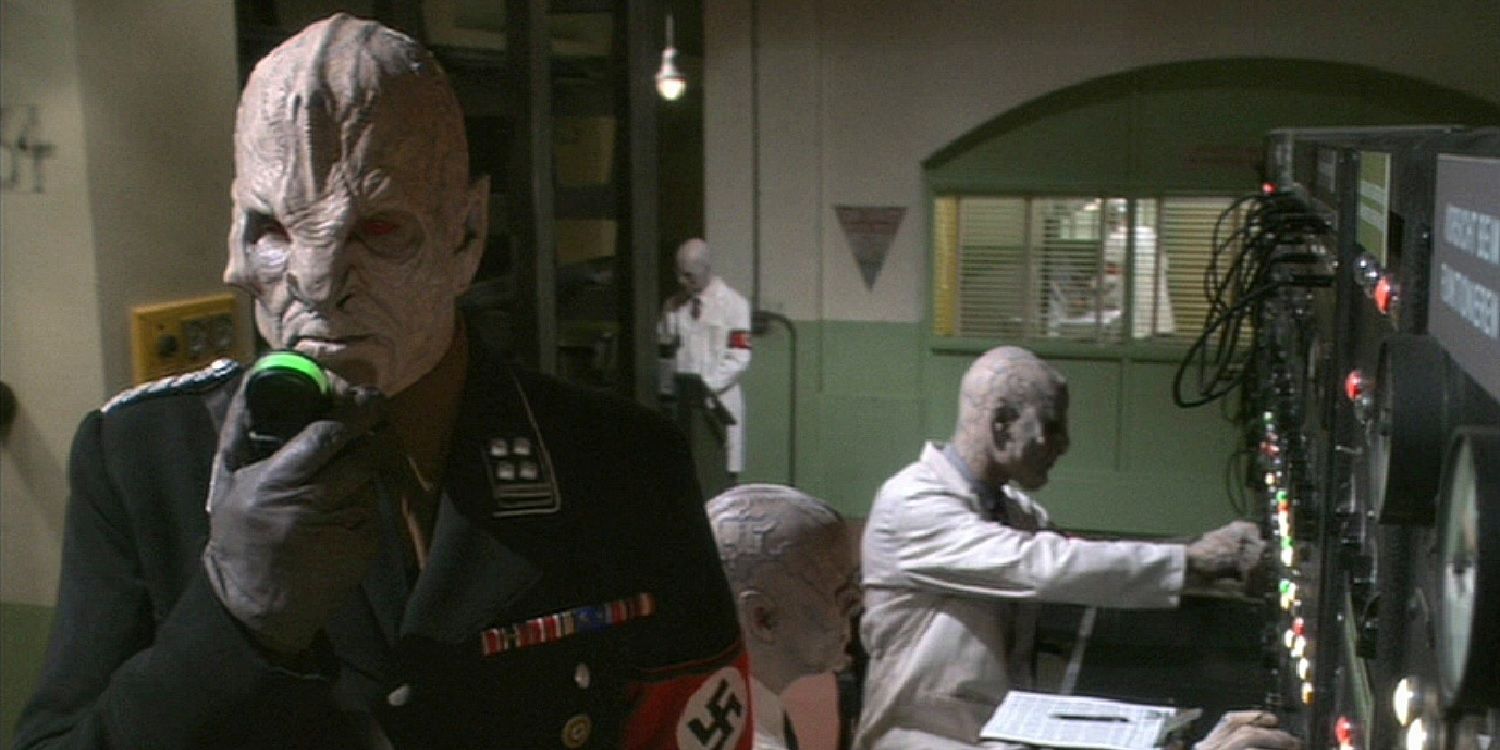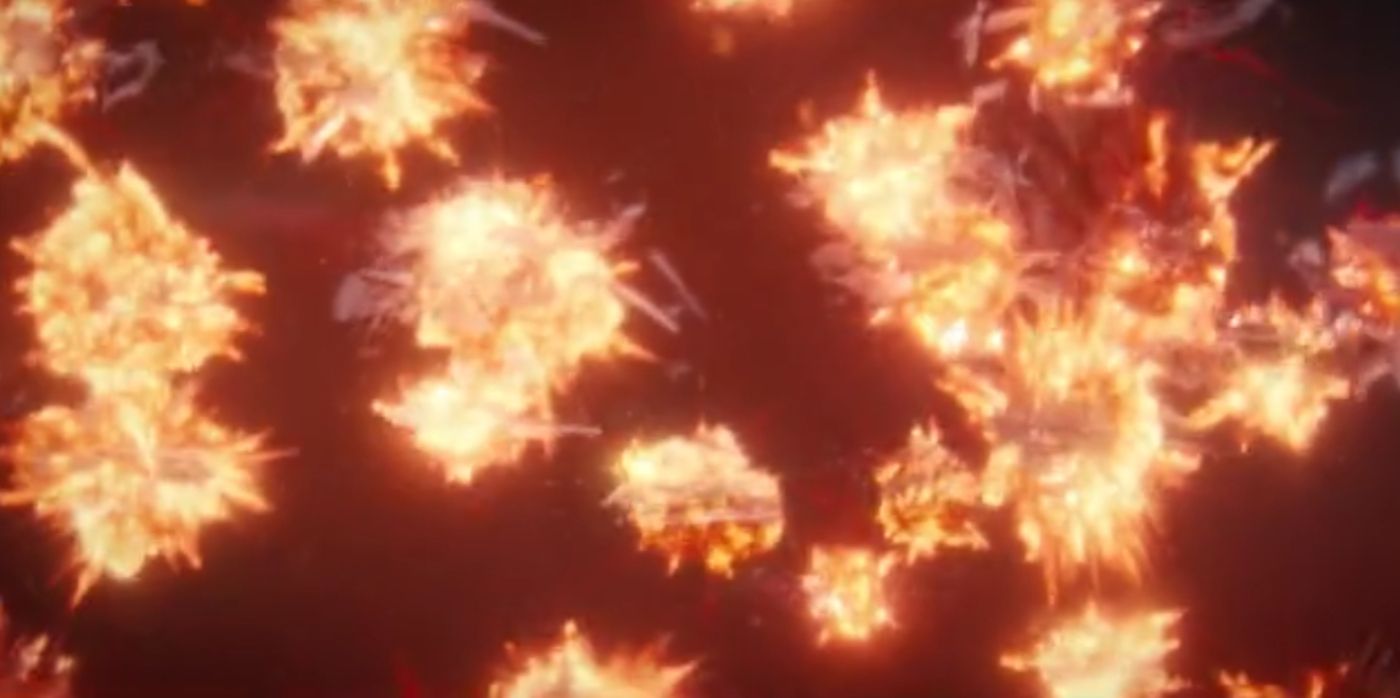Star Trek: Discovery's season 3 time jump passed over centuries of the Star Trek timeline, leaving a huge gap since the most recent known events in Picard. Discovery propelled the franchise into an entirely unknown future, long after the familiar time of the series of movies. There's no precedent for the events of this new future, but multiple Star Trek series have filled in the blanks between Picard's time and Discovery's new season.
Discovery missed 930 of history when they traveled from the mid-23rd century to the end of the 32nd century, a period that includes almost all known canon besides the prequel series Enterprise. The other series carry the timeline through the end of the 24th century, when Picard takes place, except for a few glimpses of the far future. The time jump fixed many of Discovery's prequel-related problems by leaving the well-known past behind, but now the show must contend with these flashes of insight about the centuries they skipped over.
The future shown in Discovery is vastly different from the heydey of Star Trek, so it's clear the ship skipped many significant events that shaped this universe. The crew has already faced the consequences of the Burn and the Temporal Wars, and there's likely to be more history that will affect their new mission. Discovery's crew still has little idea of how much they missed. Technology has also improved by leaps and bounds, including Discovery's 32nd century ship updates, making the futuristic technology of the previous series look quaint in comparison.
However, Discovery is not the first series to explore the future. Starfleet has a consistent problem with time travelers and omniscient beings, which gave other Star Trek crews information about the time that would come after them. Most unpleasant futures they saw were negated by their actions in the present, so only a few of those incidents are likely to affect Discovery. Nevertheless, there are several major events in almost 700 largely unknown years that impacted Discovery's 32nd century.
The Federation Expands (25th-26th Century)
Before the Burn, Starfleet had become even more of a powerhouse throughout the universe. The Federation greatly changed by the 32nd century, but those changes began with its expansion in the 26th and 27th centuries. The Federation increased its range less than 100 years after Picard. According to Q, humans would reach the Delta Quadrant by 2472. Since that was a 70-year journey in Voyager, the Federation either expanded into large swaths of previously unknown space or found a shortcut to explore the far-off quadrant.
Discovery revealed that Starfleet had also taken in many new members. Barzan II, Commander Nhan's homeworld, joined the Federation in the 25th century. Kaminar, Saru's homeworld, may have also joined during this time, though a timeframe for their membership was not given. In a possible future that temporal agent Daniels showed to Captain Jonathan Archer in Enterprise, the Federation had become a powerful force capable of repelling a trans-dimensional invasion in the 26th century, and Xindi were already serving aboard the Enterprise-J. Though the Federation has reverted to the disorganization of the Enterprise era after the Burn, Starfleet first became a power player in the universe.
Time Travel Becomes More Common (26th-31st Century)
Though Star Trek has a long history of time travel, moving through the timeline only became commonplace in the centuries after Picard. Even The Next Generation dealt with meddling from future centuries. Picard's crew encountered a hijacked 26th-century timeship in "A Matter of Time," and a 27th-century scientist sent his potentially destructive invention back in time to protect it until 24th-century criminals unearthed it in "Captain's Holiday." The casual nature of these accidental interactions with the future implies time travel was already common only a couple of centuries after known history.
Time travel has worked differently throughout Star Trek's series and movies, but almost all of them have a link to the future. Federation timeships from the 29th century pestered Voyager over their supposed temporal crimes, and Enterprise showed the Federation was fully involved in maintaining the timeline by the 31st century. When Daniels visited Archer, he explained that passive time travel for research was allowed under the Temporal Accords, showing him 28th century Federation anthropologists observing the creation of the Great Pyramids as an example. Unfortunately, not everyone abided by the Temporal Accords, leading to rogue time traveling factions altering the timeline to turn history in their favor, starting the Temporal Cold War.
The Mirror Universe Separates From The Prime Universe (27th Century)
The Mirror Universe has run directly alongside the Prime Universe timeline throughout several series, allowing people to cross back and forth and meet their doppelgangers. By the time Spock encountered the Mirror Universe in the Original Series, Starfleet already had significant interactions with this violent and unmerciful version of their universe. Even during Captain Archer's tenure in the 22nd century, the Enterprise crew found themselves entangled with their mirror counterparts. Starfleet continued to have problems with the Mirror Universe through Deep Space Nine, catching up with the known history of the Mirror Universe to the 24th century. The Terran Empire shown in Discovery had collapsed by the 24th century, making it very different from the status quo the Discovery crew knew.
After Discovery's leap forward, their representative from the Terran Empire, Emperor Georgiou, found out that the Mirror Universe had changed even more by the 32nd century. The two universes started growing apart, and no one had crossed between the universes in more than 500 years because of the widening distance, meaning the Mirror and Prime universes separated permanently in the 27th century. No information has yet been revealed about the history of the parallel universe after Deep Space Nine, but those events became irrelevant to the Prime Universe once the distance prevented crossing the boundary.
Captain Braxton Stands Trial For Attempted Destruction Of Voyager (29th Century)
Because of their unique situation being stranded in the Delta Quadrant, the Voyager crew used time travel more than most others, leading to run-ins with the future of the Federation. Starfleet officer Captain Braxton traveled back in time from the 29th century to destroy Voyager for their temporal meddling on two separate occasions. However, Voyager wasn't at fault for these particular problems. The first time, Braxton accidentally sent himself and Voyager back to the 20th century, where an entrepreneur stole Braxton's future technology. Voyager prevented this, but they made an enemy of Captain Braxton in the process. He went back to destroy Voyager again, believing Voyager was the cause of all his unfortunate circumstances after their last meeting. Future Starfleet authorities apprehended him and put him on trial in the 29th century for these temporal crimes.
A Backup Copy Of The Doctor Reactivates In The Delta Quadrant (31st Century)
Star Trek's timeline has become increasingly convoluted over the course of several series, leading to strange circumstances like a version of Voyager's EMH Doctor that might coexist in the future with the Discovery crew. In the episode "Living Witness," a backup copy of The Doctor activated on a Delta Quadrant planet approximately 700 years after Voyager left. His program was part of a museum exhibit about a distorted history of Voyager's interactions with the planet's inhabitants, and The Doctor corrected the recorded version of events. This revelation of the true history led to a new era of peace for the planet's warring factions, and The Doctor left for the Alpha Quadrant, hoping to find out what happened to Voyager.
The Temporal Wars Ends (31st Century)
By the 31st century, time travel had become a huge problem for Starfleet as the Temporal Cold War broke out. The Temporal Wars even continue to affect Discovery with the massive changes they made to the timeline. Multiple powerful entities throughout time sought to bend history to their own will, including the Sphere-Builders from the 26th century, the Na'kuhl from the 29th century, and the Suliban's mysterious benefactor from the 28th century.
At its worst point, the Cold War heated up into an all-out war, changing the timeline in significant ways, such as reversing the outcome of World War II. The 31st century Federation helped Captain Archer stop the escalation from ever happening, and the conclusion of that battlefront led to the end of the Temporal Wars. The following peace agreement outlawed time travel and declared all-time travel technology would be destroyed, making Discovery's time-traveling crew temporal criminals in the 32nd century.
The Burn Detonates All Dilithium (31st Century)
After more than 700 years of development, the Federation was devastated by the Burn, which caused all dilithium to destabilize and detonate. This took out most of Starfleet's ships, forcing them to rebuild and regroup as the Federation's presence diminished. The destruction of the dilithium and warp-capable ships meant that the members of the Federation were cut off from each other as far-reaching space travel and subspace communication collapsed. The Federation eventually departed from Earth and hid away in a secret location. The black market, dilithium raiders, and syndicates like the Orion-Andorian Emerald Chain flourished in its absence.
The Burn led to the Federation and Earth severing ties. Earth had been a hub of the Federation, the main headquarters of both the Federation and Starfleet, but post-Burn Earth went through many changes by the 32nd century. Earth left the Federation, taking on the Enterprise-era designation of United Earth. United Earth cut themselves off from the rest of the galaxy, reacting with hostile force to any encroachment on the planet as they dealt with raiders from elsewhere in their own solar system. Earth's new isolationism is a symbolic indication of how much the universe had changed since the Burn.
The cause of the Burn is still unknown, though Michael Burnham is focused on solving the mystery, as she believes the Federation can never recover until the full story of the Burn is finally told. Discovery's crew has a lot of work to do if they hope to reveal the origins of the Burn and bring the Federation back to its former glory. Until then, Star Trek: Discovery must contend with these vestiges of a future unknown to the Starfleet ship lost in time.

